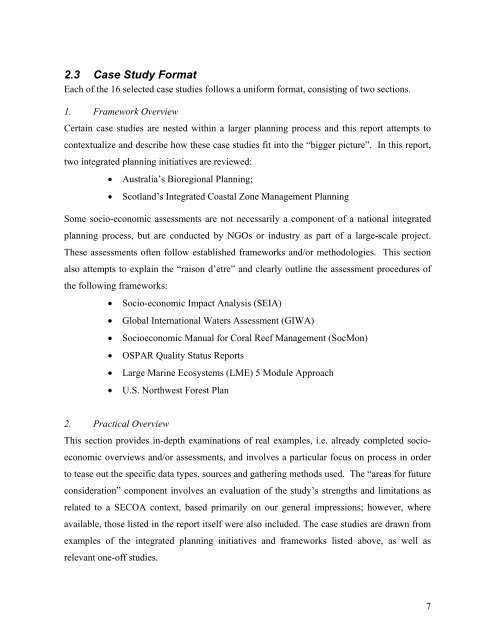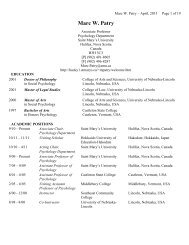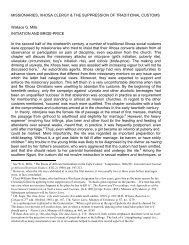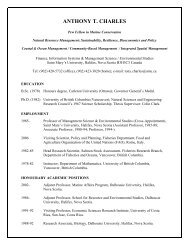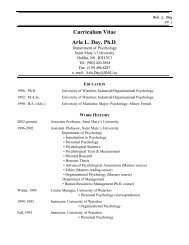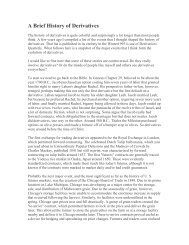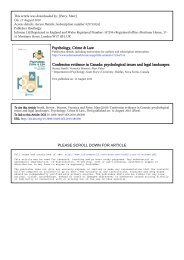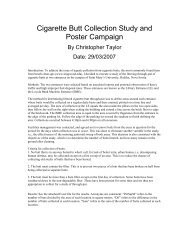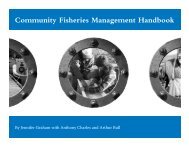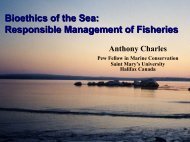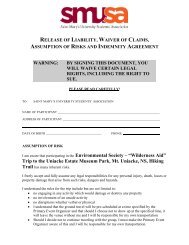Social, Economic and Cultural Overview and Assessment for Ocean ...
Social, Economic and Cultural Overview and Assessment for Ocean ...
Social, Economic and Cultural Overview and Assessment for Ocean ...
You also want an ePaper? Increase the reach of your titles
YUMPU automatically turns print PDFs into web optimized ePapers that Google loves.
2.3 Case Study Format<br />
Each of the 16 selected case studies follows a uni<strong>for</strong>m <strong>for</strong>mat, consisting of two sections.<br />
1. Framework <strong>Overview</strong><br />
Certain case studies are nested within a larger planning process <strong>and</strong> this report attempts to<br />
contextualize <strong>and</strong> describe how these case studies fit into the “bigger picture”. In this report,<br />
two integrated planning initiatives are reviewed:<br />
• Australia’s Bioregional Planning;<br />
• Scotl<strong>and</strong>’s Integrated Coastal Zone Management Planning<br />
Some socio-economic assessments are not necessarily a component of a national integrated<br />
planning process, but are conducted by NGOs or industry as part of a large-scale project.<br />
These assessments often follow established frameworks <strong>and</strong>/or methodologies. This section<br />
also attempts to explain the “raison d’etre” <strong>and</strong> clearly outline the assessment procedures of<br />
the following frameworks:<br />
• Socio-economic Impact Analysis (SEIA)<br />
• Global International Waters <strong>Assessment</strong> (GIWA)<br />
• Socioeconomic Manual <strong>for</strong> Coral Reef Management (SocMon)<br />
• OSPAR Quality Status Reports<br />
• Large Marine Ecosystems (LME) 5 Module Approach<br />
• U.S. Northwest Forest Plan<br />
2. Practical <strong>Overview</strong><br />
This section provides in-depth examinations of real examples, i.e. already completed socioeconomic<br />
overviews <strong>and</strong>/or assessments, <strong>and</strong> involves a particular focus on process in order<br />
to tease out the specific data types, sources <strong>and</strong> gathering methods used. The “areas <strong>for</strong> future<br />
consideration” component involves an evaluation of the study’s strengths <strong>and</strong> limitations as<br />
related to a SECOA context, based primarily on our general impressions; however, where<br />
available, those listed in the report itself were also included. The case studies are drawn from<br />
examples of the integrated planning initiatives <strong>and</strong> frameworks listed above, as well as<br />
relevant one-off studies.<br />
7


